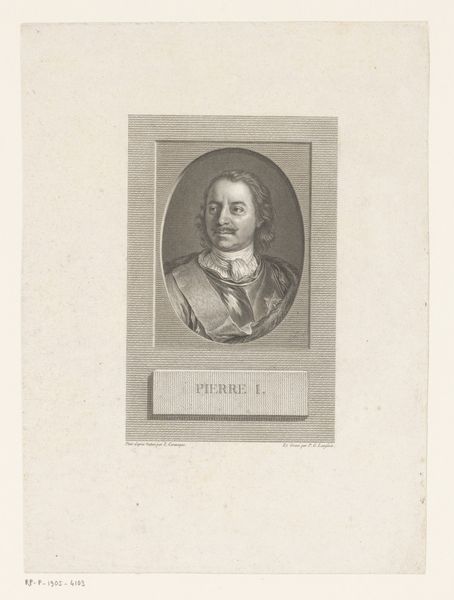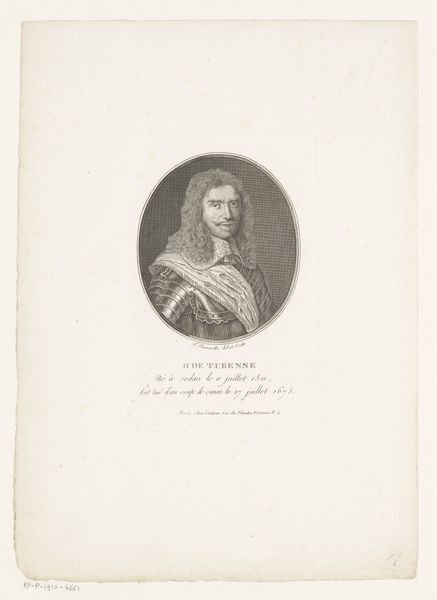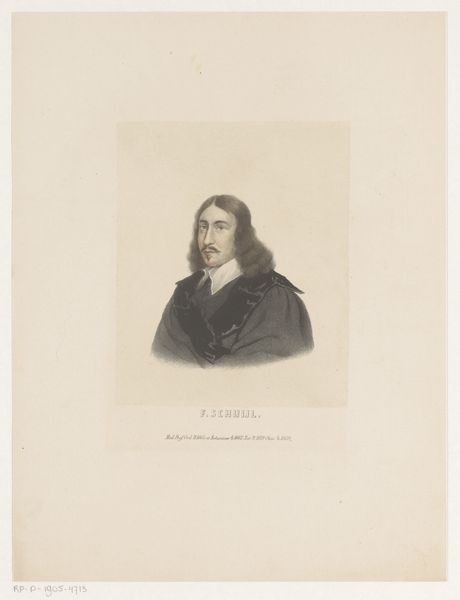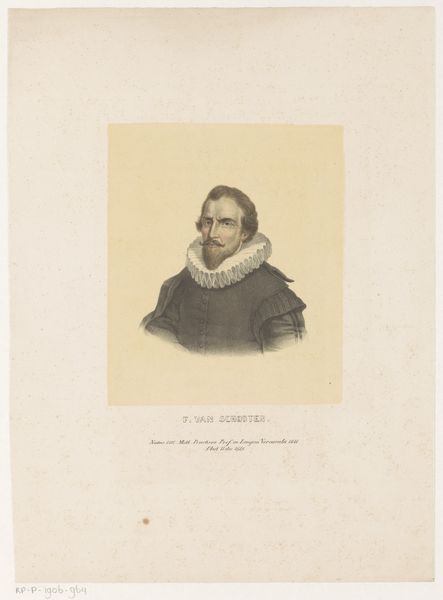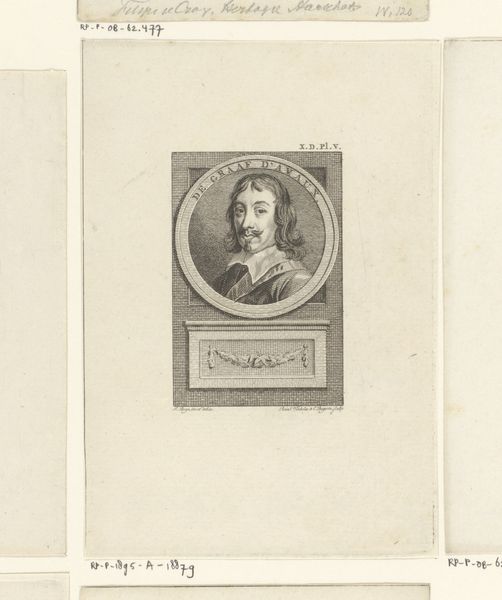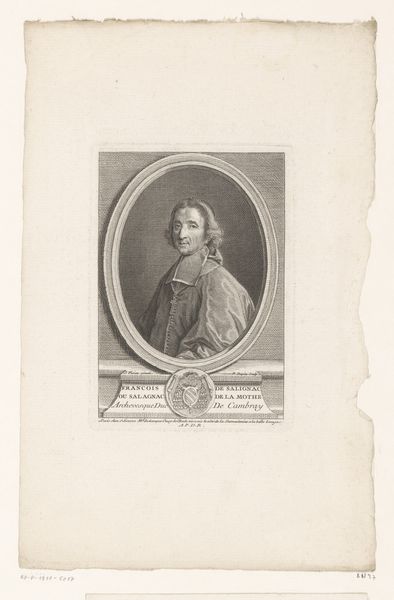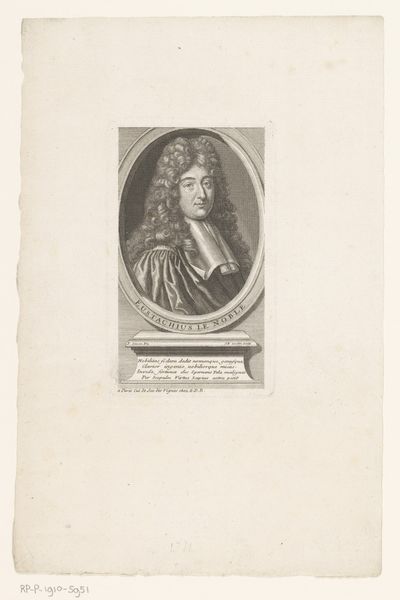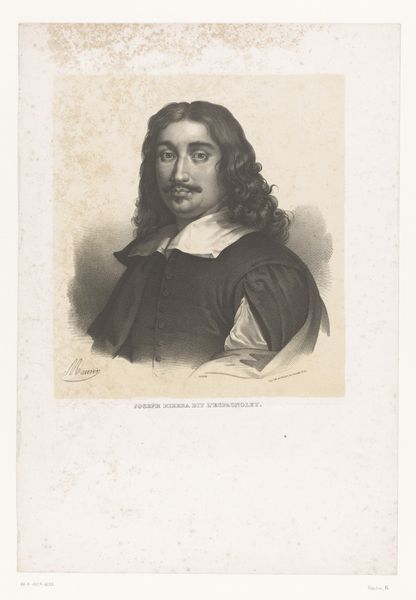
Dimensions: height 126 mm, width 90 mm
Copyright: Rijks Museum: Open Domain
Curator: Here we see a portrait of Johann Ludwig von Erlach, an engraving dating sometime between 1759 and 1815, crafted by Heinrich Pfenninger. Editor: The stark contrast of the oval portrait against the blank paper immediately pulls my eye. There's a severity in his gaze, a directness that feels… well, almost confrontational. Curator: Yes, and considering Erlach's role in the military history of France and his lineage as a prominent figure in Swiss aristocracy, that directness speaks volumes. The engraving medium, in its very essence, reflects a society steeped in hierarchy and controlled dissemination of information. Editor: Indeed. And consider the elaborate lace collar, almost a theatrical symbol of his rank, wouldn't you agree? It frames the face, directing our attention to features deemed important. His carefully arranged hair too functions as symbolic. Curator: Precisely, the curls suggest sophistication and power, almost lion-like, an evocation perhaps of martial prowess in this gentleman. But to step away from symbols, I think it's important to recognize that portraits like these served not just as representations of likeness, but also of class, power, and social standing. It would have mattered deeply who saw it, where it was displayed and what message the subject wanted it to transmit. Editor: I agree, it wasn’t a candid iPhone snapshot, that’s for sure. But I keep being drawn to the contrast – this man in an elaborate costume captured in a simple, even austere style. There's a tension between the outward display and what feels like a more internal, perhaps conflicted, representation. Does it reveal the burdens or advantages of being positioned within the elite structure? Curator: I think that tension is precisely where the image becomes intriguing. He embodies that baroque sensibility – dramatic and intricate, but existing during a period of emerging democratic thought and upheaval. To me, that friction signifies the inherent paradox of aristocratic identity in that era. Editor: Well put. It prompts us to delve deeper, beyond the surface image of rank, to consider what stories—personal and political—the sitter carries with him. This exercise in trying to look past symbols always opens new horizons, personally, culturally, and historically. Curator: Absolutely. Every layer uncovered allows us to perceive it a bit differently.
Comments
No comments
Be the first to comment and join the conversation on the ultimate creative platform.
